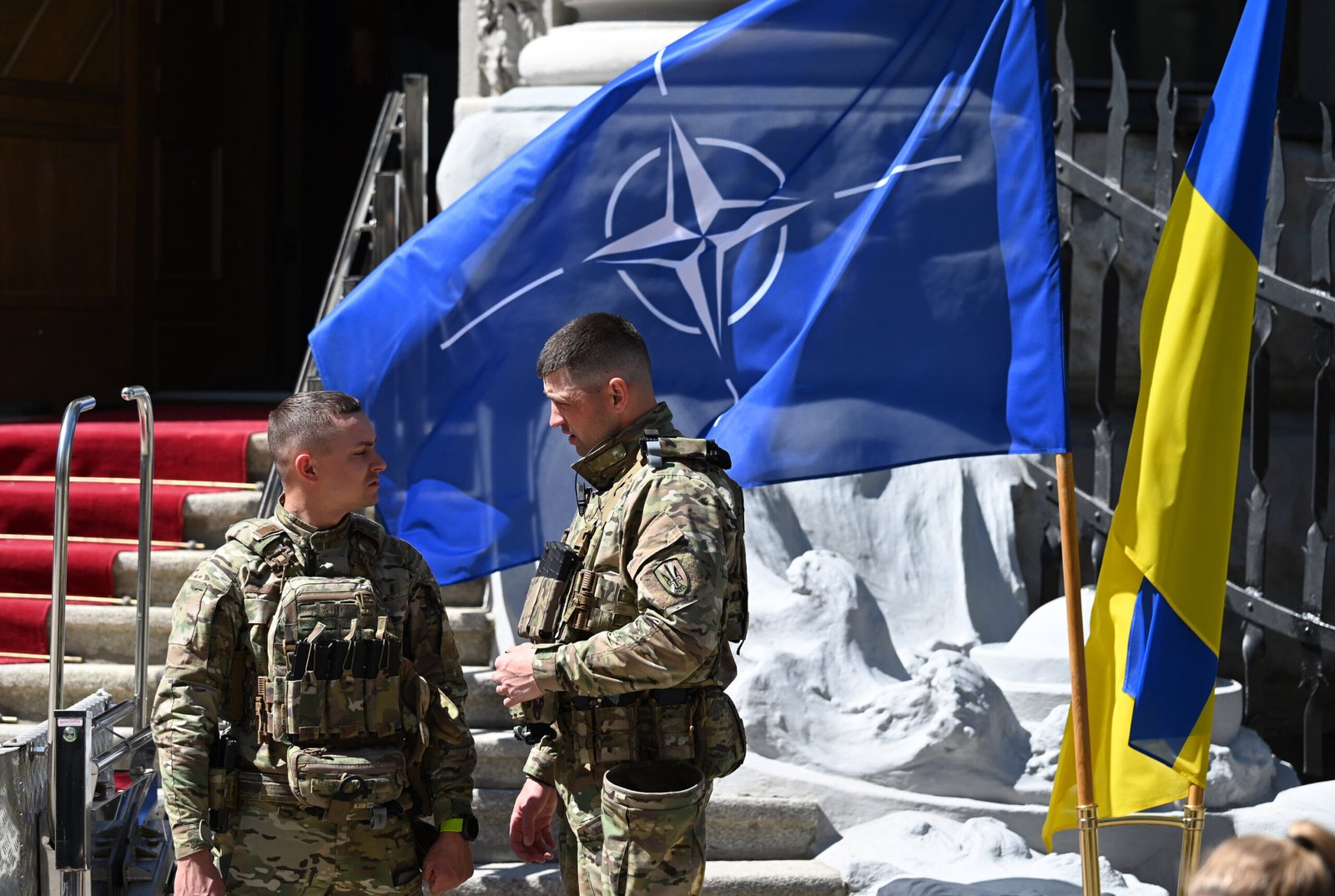
Russian missile strike on the sprawling industrial complex in Dnipro on November 21 produced far more strategic resonance than material damage – and has reopened hard questions about the constant mutation of the long Russia-Ukraine war and the methods of managing its escalation.

Kyiv in April 2024. Photo: STR/NurPhoto via Getty Images
The technical data on the missile in question is still scarce, but its range is definitely intermediate (more than tactical, and less than intercontinental), and the multiple warheads make it more suitable for nuclear rather than conventional strikes. President Vladimir Putin described the strike as a “combat test” and promised to execute more of them, which illustrates his desire to maintain control over the escalation as well as over the strategic initiative in combat operations.
This ambition is challenged by Ukraine and contained by NATO, so in fact, the three parties to the protracted war are implementing particular and have different approaches to managing the threat of escalation, first of all regarding the use of nuclear weapons, but also in geographic terms. During the month of November, all three approaches were tested – and the war acquired new dimensions, which nevertheless, do not amount to a significant and dangerous escalation.
What makes Putin’s approach special and difficult to accommodate for other participants in the mind game of deterrence is his determination to decide what constitutes escalation and what doesn’t. Ukrainian drone strikes on the bases of Russian strategic aviation and on the early warning radars could have been interpreted as escalatory moves, but the Russian high command opted to ignore them. In contrast, tactical strikes by Western missiles into the Russian territory were defined by Putin as a major escalation that allegedly altered the nature of the war and required a powerful asymmetric response from Russia. In reality, the strike by US-supplied ATACMs missile on an ammunition storage in the Bryansk region on November 19 produces smaller impact that the drone strike on an arsenal in the Tver region on September 18.
Putin, nevertheless, felt oblige to deliver on his threat and was visibly elated that the experimental missile called Oreshnik did arrive to the designated target rather than explode on the launch, like the Sarmat missile on the Plesetsk cosmodrome on September 22. He kept bragging about that strike for several days, but his descriptions were so confusing that it is hard to distinguish misinformation from ignorance. Attempting to explain why the warheads didn’t explode, he compared their kinetic impact with the Tunguska meteor, which actually did explode over Eastern Siberia on June 30, 1908. Posturing aside, it is clear that Ukrainian strikes with ATACMS and Storm Shadow/Scalp missiles are continuing, while assembling another Oreshnik (which actually is an assemblage from several designs) will require weeks, and mass production is next to impossible because of limited industrial capacity.
The Ukrainian approach is centred on exposing Russian bluffs and refusing to yield to Putin’s blackmail. Many Ukrainian cities have been on the receiving end of Russian missile strikes over the 1.000 days of war (and counting), but the threats of proceeding to a non-strategic nuclear strike, often discussed by Moscow experts, fail to produce a noticeable impression. The Ukrainian command has its own ideas about escalation, and the surprise offensive into the Kursk region, launched on August 6 and still on-going, signified a major expansion of the war zone. It was possible to expect that Putin, shocked by this daring incursion, would over-react and resort to desperate measure, but he opted instead to downplay the significance of this occupation of Russian territory by hostile troops. When it transpired that Russian forces had no reserves necessary for fulfilling his order to expel the Ukrainian brigades, Putin initiated the deployment to this battleground of some 10.000 troops “imported” from North Korea. These reinforcements became legitimate targets for Ukrainian strikes, but more importantly, the direct involvement of North Korea signified a drastic geographic escalation of the European war into the East Asian strategic theatre. Valery Zaluzhny, former commander-in-chief of the Ukrainian army, had good reasons to describe this development as the beginning of the third world war.
Certainly an overstatement, this assessment is useful for illuminating the limitations in NATO strategy of confronting Russia and supporting Ukraine caused by the profound concerns about escalation. Every collective decision on supplying the Ukrainian army with offensive weapon systems – such as forming the coalitions around the Leopard main battle tanks and the F-16 fighters – was made after many weeks of measuring the potential destabilizing impact. These debates have become the key means of escalation management by the Alliance, not least by eliminating the element of surprise and giving Russia plenty of time for preparing counter-measures against new Ukrainian capabilities.
The main influence on setting this pattern has certainly been the decision-making in the Biden administration, and in hindsight, it is easy to criticise it for ambiguities and procrastinations. The US intelligence assessment regarding the real risk of Russian non-strategic nuclear strike in October 2022, during the fighting retreat of the Russian grouping cut-off on the western side of the River Dnipro in the Kherson region, clearly made an impression on President Biden. That particular crisis was resolved with several bilateral meetings, but Biden has since obviously preferred to err on the side of caution, even while his intelligence chiefs argued publicly about the imperative of not being intimidated by Russian nuclear sabre-rattling.
The paradoxical outcome of the interplay between the three approaches to escalation management is that the Russian, Ukrainian, and NATO efforts at dissuading the enemy from executing high-risk actions have all failed, and yet – no significant escalation of the long war has occurred. The nuclear threshold hasn’t been crossed, but the revisions in Russian nuclear doctrine amount to a deliberate attempt at lowering it. Multiple “red lines” were drawn and crossed, and the discourses on escalation converge on a confusing conclusion resembling the famous “Schrödinger cat” paradox, when the imaginary cat in a black box is simultaneously alive and dead. The war has been evolving and the attrition has accumulated, generating progressively heavier pressure on all parties, who perceive the prospect of freezing the deadlocked hostilities as unsatisfactory and risky. This convergence of views may, in another paradoxical take on escalation, which is and isn’t happening, produce an agreement on putting the war on pause, because the alternative dooms the leaders to continue playing with the risks too high.
- Pavel K Baev is a Research Professor at PRIO
- This text was first published by Panorama 3 December 2024
Source link







